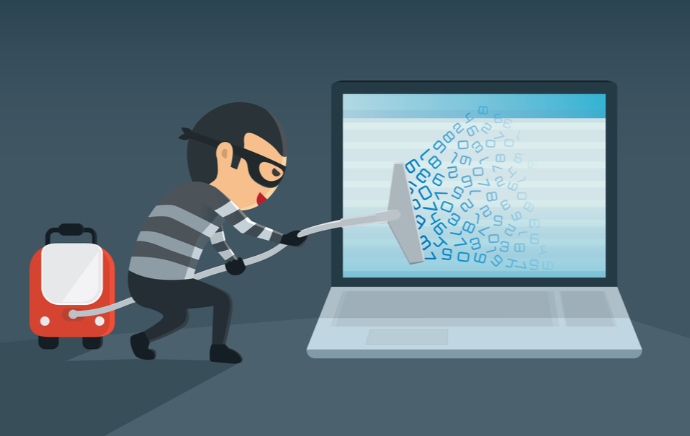Cyber hygiene has become a critical aspect of business operations in today’s digital world. Cyber hygiene, the most observant factor in modern businesses, refers to the practices organizations regularly perform to maintain system health, secure their networks, protect data, and enhance online security. Like personal hygiene, which supports human well-being, cyber hygiene helps maintain the health and security of online environments to protect sensitive data and prevent attacks.
The managed IT services in Philadelphia are an excellent example of cyber hygiene practices, where cyber security is paramount. Indeed, terrific cyber hygiene practices help to mitigate cyber threats like phishing, malware, and ransomware. This article helps to explore essential concepts and strategies to assist businesses in establishing solid cyber hygiene practices.
Cyber Hygiene and its Importance in Modern Businesses
In simple words, cyber hygiene is the foundation of cyber security and cyber resilience. Cyber hygiene involves antivirus software, firewalls, strong password policies, data encryption, authentication mechanisms, and more. Cyber-attacks can potentially take down an entire organization, so users should continuously be updated with their apps, web browsers, and operating systems to reduce vulnerabilities.
Cyber hygiene protects businesses against cyber threats and ensures digital assets’ integrity, confidentiality, and availability. Furthermore, poor cyber hygiene can lead to severe consequences, such as unauthorized access that may cause security breaches jeopardizing customer data, intellectual property, or proprietary information.
Key Components Of Cyber Hygiene
Regular Software Updates and Patch Management
Keeping software, operating systems, and applications up to date is crucial to save your data from unauthorized access. Regular updates often include security patches that address known vulnerabilities. Regular software updates and patch management are critical for preventing cyber-attacks. While addressing the security vulnerabilities in software, organizations prevent hackers from infiltrating their IT infrastructure from hackers.
Also, companies can take advantage of new features and improvements by running the latest software version. Various tools, such as SCCM ( system center configuration manager ), WSUS (Windows server updates services ), and Ansible, will help businesses establish regular software updates and patch management processes while reducing the risk of cyber attacks.
Strong Password Policies
Simple and weak passwords are the primary sources that pave the way for cyber attacks. A robust password policy will help you mitigate risks by enforcing complex and regular password changes. Two-factor authentication accompanies multiple layers of security, thereby improving the system’s overall protection. To make the system more secure, more layers of authentication can be added. In addition, using password managers to store and generate strong passwords is also advised.
Employee Training and Awareness
Negligence among users remains the main factor in cyber incidents. Therefore, frequent training and educational programs on best practices for cyber security should be conducted to keep them updated. Businesses should encourage employees to be aware of cyber security issues and how to act in case of an incident.
Data Backup and Recovery
It is the process of creating and storing copies of data to save businesses from the hassle of losing their data for good. Data loss can occur due to cyber attacks, hardware failures, or natural disasters. Indeed, for the best results, backup copies are made consistently and regularly to reduce the data loss between backups. Some best practices include using automated backup solutions, storing backups offsite or in the cloud, and periodically testing data recovery processes.
Network Security Measures
Securing networks from unauthorized access and malpractices is very important to protect confidentiality, availability, and integrity. The best network security measures are access management, security monitoring, firewalls, Anti-Malware software, application security, data risk management, email security, SIEM, endpoint security, BDR, VPN, web security, etc. Ensure your business opts for the suitable method based on your unique needs.
Incident Response Plan
It is a set of instructions to help IT staff detect, respond, and recover from network security incidents. Such plans address problems like cybercrime, data loss, service disruption, and mitigation measures that might threaten the work routine. A sufficient incident response plan provides a course of action for all significant incidents. An incident response plan establishes a transparent chain of command, defines roles and responsibilities, conducts regular drills, and maintains communication channels with relevant stakeholders.
Compliance with Regulations
It is an organization’s compliance with laws, regulations, guidelines, and specifications relevant to its business processes. Any violation of regulatory compliance often results in legal punishment, including federal lines. Some regulatory compliance rules are explicitly designed to ensure data protection. Examples include the Payment Card Industry Data Security Standard (PCI DSS), Health Insurance Portability and Accountability Act (HIPAA), Federal Information Security Management Act (FISMA), California Consumer Privacy Act (CCPA), etc.
Implementing Cyber Hygiene Practices
Implementing cyber hygiene practices in today’s technologically advanced world is no longer a choice. Having reliable cyber hygiene policies will benefit you in numerous ways. Some of them are listed below.
- Assessment and Risk Management – This leads to identifying vulnerabilities and prioritizing mitigation efforts. A risk management strategy is developed that addresses identified risks through a mixture of technical controls, policies, and methods.
- Continuous Monitoring and Adaptation – A mechanism should be developed to meet unexpected cyber threats. Continuous monitoring must detect and respond to potential threats in real-time. Update your cyber hygiene strategies to stay current with cyber security trends and unauthorized access.
- Collaboration and Partnerships – Innovation and creativity are developed in business through collaboration and partnerships. This makes it possible to get engaged with cybersecurity experts, industry peers, and relevant stakeholders to share knowledge, insights, and best execution.
Conclusion
Cyber hygiene is essential for modern businesses to protect their digital assets, maintain operational continuity, and preserve trust with customers and partners. Businesses can significantly reduce the risk of cyber attacks by establishing robust practices like software updation, password management, employee awareness programs, network security, etc.
Keeping the employees aware and in the loop about modern cyber hygiene strategies will also help businesses to stay ahead of the cyber attacks up to an extend. In addition, implementing the best cyber hygiene practices is very effective against emerging cyber security challenges. By investing in cyber hygiene today, businesses can drastically win over all the complexities of the digital world that are emerging daily.







